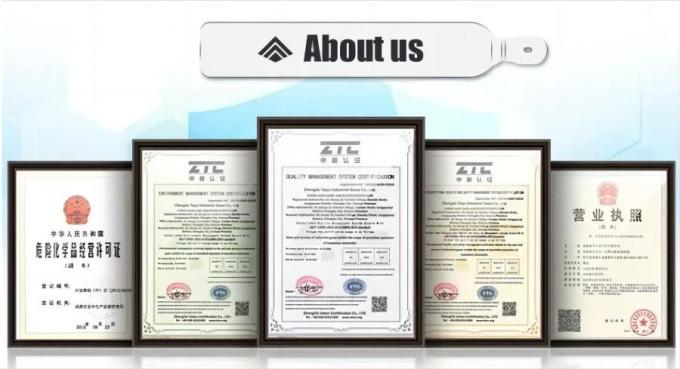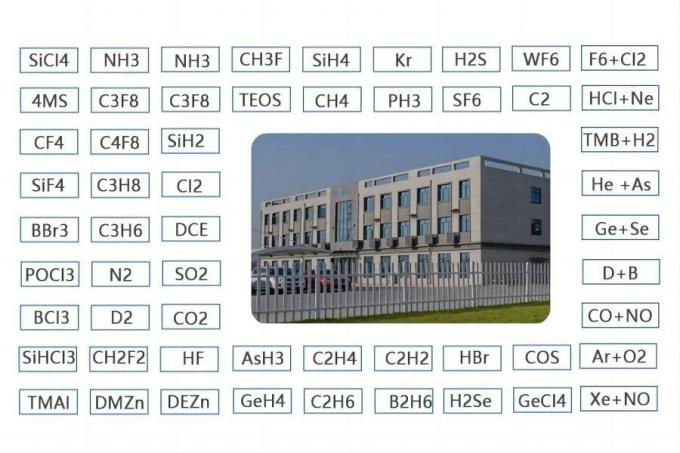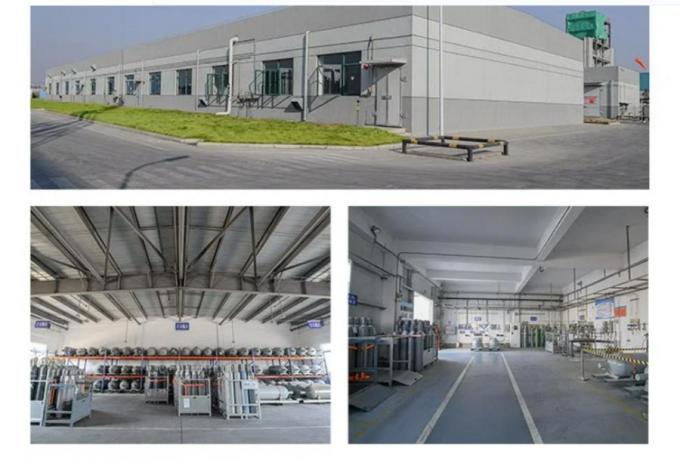


| MOQ: | 1kg |
| Price: | U$ 13000/kg |
| Standard Packaging: | Cylinder/Tank |
| Delivery Period: | 15 days |
| Payment Method: | L/C, T/T |
| Supply Capacity: | 5000kg/month |
Phosphine gas (PH3) is a highly toxic and flammable gas that consists of one phosphorus atom bonded to three hydrogen atoms. It has a pungent odor, similar to that of rotten fish or garlic. Phosphine gas is typically produced through industrial processes or as a byproduct of certain biological activities, such as the decomposition of organic matter.
Here are a few key points about phosphine gas:
1. Toxicity: Phosphine gas is extremely toxic to humans and other organisms. Inhalation of even small amounts can cause severe health effects, including respiratory distress, nausea, dizziness, and even death. Long-term exposure to low levels of phosphine gas can lead to chronic health issues.
2. Industrial Uses: Phosphine gas has various industrial applications. It is used as a fumigant to control pests in stored grain and other agricultural products. It is also employed in the production of semiconductors, as a reducing agent, and as a precursor in the synthesis of various organic compounds.
3. Laboratory Uses: In laboratory settings, phosphine gas is sometimes used as a reducing agent and as a source of phosphorus in chemical reactions. However, its use requires extreme caution due to its toxicity and flammability.
4. Natural Occurrence: Phosphine gas can be found in trace amounts in certain natural environments, including swamps, marshes, and penguin guano. It is produced by microorganisms through the breakdown of organic matter, and its presence in these environments has been of interest to astrobiologists as a potential indicator of biological activity on other planets.
5. Safety Precautions: Handling phosphine gas requires strict safety measures. It should only be used in well-ventilated areas or under fume hoods to prevent inhalation. Protective clothing, including gloves and respiratory protection, should be worn when working with phosphine gas. Proper storage and disposal procedures must be followed to avoid accidents or environmental contamination.
| Model No: | PH3 | Transport Package | Y-Cylinder |
| Specification: | 20L/40L/470L | Trademark | CMC |
| Origin: | Suzhou,China | HS Code | 2812190091 |
| Production Capacity: | 600t/Year |

![]()




| MOQ: | 1kg |
| Price: | U$ 13000/kg |
| Standard Packaging: | Cylinder/Tank |
| Delivery Period: | 15 days |
| Payment Method: | L/C, T/T |
| Supply Capacity: | 5000kg/month |
Phosphine gas (PH3) is a highly toxic and flammable gas that consists of one phosphorus atom bonded to three hydrogen atoms. It has a pungent odor, similar to that of rotten fish or garlic. Phosphine gas is typically produced through industrial processes or as a byproduct of certain biological activities, such as the decomposition of organic matter.
Here are a few key points about phosphine gas:
1. Toxicity: Phosphine gas is extremely toxic to humans and other organisms. Inhalation of even small amounts can cause severe health effects, including respiratory distress, nausea, dizziness, and even death. Long-term exposure to low levels of phosphine gas can lead to chronic health issues.
2. Industrial Uses: Phosphine gas has various industrial applications. It is used as a fumigant to control pests in stored grain and other agricultural products. It is also employed in the production of semiconductors, as a reducing agent, and as a precursor in the synthesis of various organic compounds.
3. Laboratory Uses: In laboratory settings, phosphine gas is sometimes used as a reducing agent and as a source of phosphorus in chemical reactions. However, its use requires extreme caution due to its toxicity and flammability.
4. Natural Occurrence: Phosphine gas can be found in trace amounts in certain natural environments, including swamps, marshes, and penguin guano. It is produced by microorganisms through the breakdown of organic matter, and its presence in these environments has been of interest to astrobiologists as a potential indicator of biological activity on other planets.
5. Safety Precautions: Handling phosphine gas requires strict safety measures. It should only be used in well-ventilated areas or under fume hoods to prevent inhalation. Protective clothing, including gloves and respiratory protection, should be worn when working with phosphine gas. Proper storage and disposal procedures must be followed to avoid accidents or environmental contamination.
| Model No: | PH3 | Transport Package | Y-Cylinder |
| Specification: | 20L/40L/470L | Trademark | CMC |
| Origin: | Suzhou,China | HS Code | 2812190091 |
| Production Capacity: | 600t/Year |

![]()


